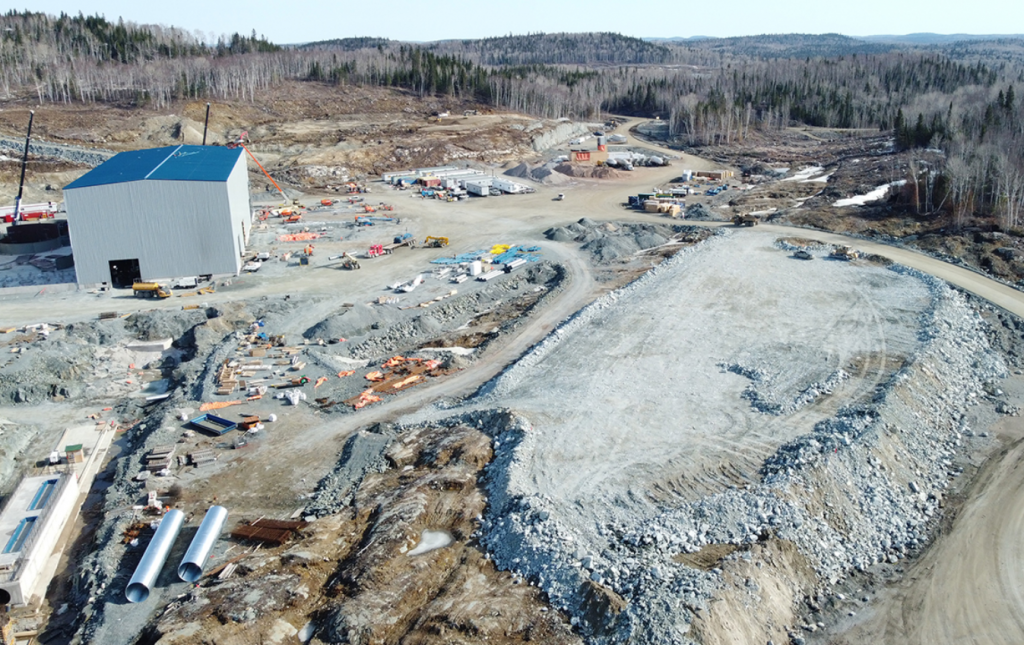Argonaut Gold posts gold reserves

Argonaut Gold Inc. [AR-TSX] provided an update on a significant increase in mineral resources for the company’s two principal assets: the Magino project, in the final stages of construction, located in Ontario, Canada, and the Florida Canyon mine in Nevada. Measured and indicated mineral resources at the two principal assets increased by 14% to 5.7 million gold ounces while inferred mineral resources more than quadrupled to 3 million gold ounces.
On a consolidated basis, measured and indicated mineral resources total 11.3 million gold ounces, inferred mineral resources total 3.5 million gold ounces, and proven and probable mineral reserves total 5.6 million gold ounces effective Dec. 31, 2022.
“This updated resource statement underpins our belief that the combination of Magino and a redevelopment of Florida Canyon can provide the foundation for Argonaut’s transition into a low-cost mid-tier gold producer in North America,” stated Richard Young, president and CEO.
At Magino, nearly all of the measured, indicated and inferred mineral resources fall into a larger open-pit cone as the deeper high-grade drill results from the 2022 exploration program targeting underground potential ended up floating into a deeper open-pit cone. Magino’s mineral reserve estimate remains largely unchanged from the prior year at 2.4 million gold ounces. Prior-year reserves were estimated using a long-term gold price of $1,600/oz, while, this year, the company is reporting mineral reserves using $1,350/oz, removing 66,000 ounces of low-grade material from reserves as a result.
“Magino is a large high-quality asset with significant growth and expansion potential. This year, we expect to begin a program to convert resources to reserves within the open pit and target the high-grade potential at depth,” stated Marc Leduc, chief operating officer. “We believe Magino will grow in size and quality to become Argonaut’s cornerstone asset and one of the largest, lowest-cost gold mines in Canada.”
Magino is expected to achieve commercial production in the third quarter of 2023.
At Florida Canyon, inferred mineral resources increased to 2.1 million gold ounces from 20,000 gold ounces last year, in part due to the inclusion of 28,956 metres of drilling, and initial inclusion of sulphide mineralization. The inclusion of 700,000 ounces of sulphide mineralization helped pull an additional 1.35 million ounces of oxide mineralization into a large economic pit. The mineral reserve estimate for Florida Canyon remains largely unchanged at 930,000 gold ounces as additional drilling offset depletion and loss from higher costs.
“Our Florida Canyon mine has significant growth potential as it resembles many gold deposits in Nevada where large sulphide deposits exist below oxide mineralization. Florida Canyon has produced 2.8 million ounces of gold since it opened in 1986, demonstrating a geological system that created significant gold mineralization. Last year, we drilled FCM-0124 that had a mineralized interval of 73 metres at 8.8 g/t gold, which demonstrates the high-grade nature in some of the sulphide zones. The focus this year will be on updating the geologic model for the property and beginning a proof-of-concept drilling program on the sulphides to demonstrate the growth opportunity of this asset,” added Leduc.
At the La Colorada complex, the mineral reserve estimate increased by 13% to 512,000 gold ounces based on 14,450 metres of drilling, which added 115,000 ounces, or 56,000 ounces net of depletion, with approximately 75% contained within the El Creston pit.
Measured and indicated resources decreased due to the removal of the Gran Central deposit from the resource model. The deep drilling at El Creston had a significant positive impact on the overall grade of the La Colorada complex, which increased more than 20 per cent to 0.83 g/t as higher-grade material was encountered at depth.
At the San Agustin mine, both mineral reserves and resource estimates declined materially. Reserves declined by 57% to 145,000 gold ounces from 336,000 gold ounces. Measured and indicated resources and inferred resources declined by approximately 60% and 70%, respectively. The decline in reserves and resources was largely due to depletion, the impact of a higher cost structure and modelling changes.
Magino is expected to achieve commercial production in the third quarter of 2023 and become Argonaut’s largest and lowest-cost mine. The commissioning of Magino will be the first step in transforming the company as it enters a pivotal growth stage.
The company also has three operating mines, including the Florida Canyon mine in Nevada, United States, where it is pursuing additional growth, the La Colorada mine in Sonora, Mexico, and the San Agustin mine in Durango, Mexico.
